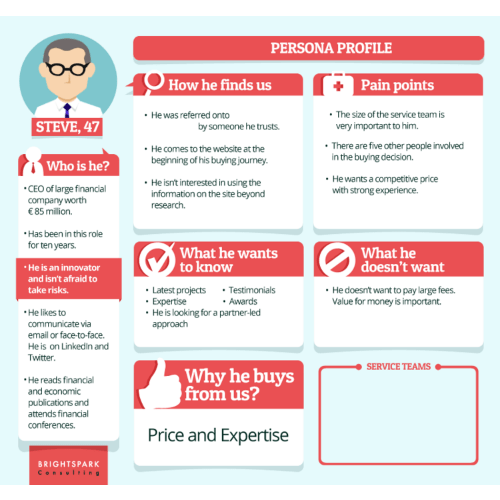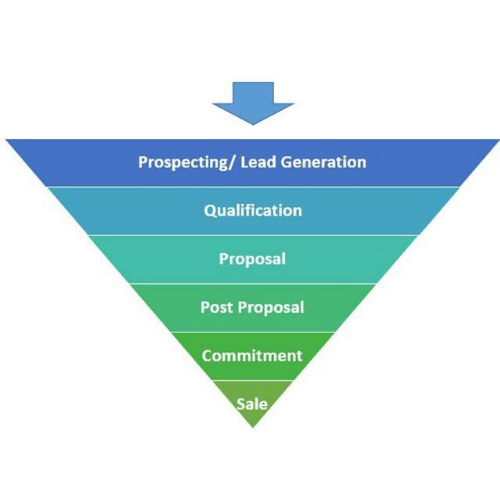
SaaS Sales: The Ultimate Guide To Master
As the business processes’ dependency increases on SaaS, its demand skyrockets. Therefore, new SaaS companies are constantly enrolling, and the market is continuously growing. But to maintain the sales rate in a highly competitive market, one needs to master SaaS sales strategy building.
SaaS sales is a complicated procedure as the business needs to convince its customers to buy a product that is not tactile. To sell something that the users can never hold in their hands is not an easy task; therefore, it needs a particular approach and a lot of practice.
What Is Saas Sales?
SaaS organizations serve customers with different intentions. Some may save the client’s time, some may be interested in saving the client’s money, and some may help to increase the revenue and efficiency. For whatever purpose the company provides SaaS, it should be clear and appealing to users. Additionally, SaaS products are more complex to use than physical products, so there is a need to provide sufficient knowledge and training to the clients. Therefore, the end goal is to make the customers successful.
To make the sales process successful, the sales representative needs to make the customers feel that there is some problem in the business process, and these problems can be addressed with the solution the company is offering. Then the customers might start taking some interest in the product, and that’s where the product demo works. The demo shows the system efficiency, and if the client has a visionary perspective, then he might consider the cost-effectiveness of the particular product in the long run. Then, the sales process again gets in the hands of representatives as they have to convince the client to purchase the product and close the pricing deal.
So, as we take an overview of the process, we can see that the sales process’s success mainly depends on the sales representative’s skills. The company must set up an efficient sales funnel that leads to a constant rise in conversions to achieve expected sales growth.
Stages Of The Sales Process
A well-organized sales funnel is the dream of many, but very few businesses can achieve it. To set up the funnel in a practical way, one needs to understand the process stages from the initial stage.
1. Define The Ideal Buyer Persona
Image(Source)
The most critical and beginning step of the sales process is to define the buyer’s personas. The company needs to classify which market segments they should target and what they expect from a particular SaaS product. To understand the consumer needs and their motives behind purchasing a specific product, the company must go through setting a buyer persona first.
Buyer personas are made based on different components, though some points may hold less value depending on the industry and business type. Here are some significant elements described to identify the personas:
- Demographic
(Location, age, gender, income)
- Work profile
(Their company/business type, job description, responsibilities)
- Goals
(Buying motives)
- Pain points
(Challenges faced by the consumer in performing certain activities that the software can make ease)
- Information Source
(Website, magazines, newspapers, in-people)
By defining the buyer personas, a company can easily decide which segment to target and how to generate effective sales. In addition, essential information about the customer lets the sales representative make an impressive pitch of the product that uniquely appeals to customers.
2. Set Up The Sales Pipeline
The sales pipeline is a visual representation of every marketing and sales stage from which the customer goes through. It reflects the customer journey and their experiences with the business. The more an organization has control and visibility of the sales pipeline, the more it can generate revenue.

The sales pipeline provides a summary of available and upcoming opportunities, so managers can predict the future revenue, determine bottlenecks of the funnel, and identify necessary improvements that should be made. There are seven main stages of the sales pipeline:
- Prospecting
(Customers get to know about the business through marketing and promotional activities)
- Lead qualification
(Consumers gain more information about the products/services through ebooks, webinars, or other lead magnets)
- Demo or meeting
(Prospects get information about the company offerings and pricing structure)
- Proposal
(Sales rep. present how the product/service can make the process easy)
- Negotiation and commitment
(Adjustment of pricing and expectations)
- Opportunity won
(Sale closed and order fulfillment)
As the sales pipeline represents the customer experience and journey through different stages, the organization must conduct a timely evaluation of the pipeline to identify the weak points and find solutions.
Also read : Top SaaS Trends – Every Company Should Follow
3. Start Filling The Pipeline
Filling the pipeline and generating leads is a challenging task for any marketing team. There are numerous approaches to building a sales strategy, but choosing an effective one for the business is always the most essential.
- Blogs
(informative blogs, SEO-optimized guest posts, link building)
- Social networks
(get in touch with the target audience’s social communities, and collaborate with prospects’ ideal influencers)
- Newsletter
(start a newsletter providing authoritative information about the industry and collect the data of consumers after they subscribe to the newsletter)
- Additional materials
(another way to collect the data is to provide additional materials to the audience, such as ebooks, infographics, templates, etc.)
4. Create Qualification Criteria
Generating SQL(sales qualified leads) is a difficult task for any SaaS company. Marketing qualified leads are analyzed and classified into sales qualified ones. Let’s get a clear thought about:
Suppose the site has a new subscriber, and the sales team starts evaluating their details. A study of the user’s social networks suggests that he falls under the target audience. But after checking his business type and website, it was realized that his industry/sector doesn’t fit with the problems that the business is solving. So, this type of lead cannot be addressed as SQL, and their chances of converting are very less or none.
Therefore, the business needs to set a lead qualification criteria to avoid such miscalculations. It is like creating a “to-do list” for the marketing department that can drive high-quality leads. Below stated elements should be added to the lead qualification checklist to filter them better:
- Person’s level of interest
(Is the user genuinely interested in purchasing the product?)
- Use of the product
(Does the prospect have any use of a particular product that the business is offering?)
- Client’s budget
(Does the person have enough money to buy the product?)
5. Test New Hypotheses
After setting up the process and a constant workflow, the question of improvement often arises. Businesses try to improve the sales process’s efficiency by changing the content strategy, communication channels, or using software.
The ultimate goal is to improve the customer experience and drive more sales and revenue. To enhance their experience, the best way is to collect feedback and identify the areas for improvement. Constant evaluation of the process and changing the strategies according to the demand is beneficial.
5 Challenges Of SaaS Selling
From the process mentioned above, we can say that there is a need to educate the potential customers about the SaaS product, so they can know its importance in the business process and make better decisions. But apart from it, there are some additional challenges, too.
Product Complexity
Usually, SaaS products are complicated in practical use, and it becomes even more complex for a non-tech-savvy person to operate them. Therefore, a product with difficult functionalities can be hard to sell. Various companies’ sales teams face this concern. These teams have to spend most of their time providing knowledge about the product, doing demos, answering the questions, convincing multiple decision-makers, and negotiating with clients.
Time-Consuming Process
The second tricky thing is converting the leads, as it is time-consuming. It requires patience because it doesn’t happen in just a single transaction; it may take a day, week, or even a month. Therefore, future revenue prediction becomes hard as a specific revenue pattern cannot be drawn. Then another concern related to this is staff turnover while ongoing proceedings with the clients. If an employee leaves the job midway in the sales process, then the other employee joining the cycle might not be aware of buying motives and buyer’s stage in the cycle.
Multiple Buyer Personas
Enterprise SaaS requirements are typically addressed by a committee consisting of multiple stakeholders. These stakeholders can be from different divisions with different challenges to deal with. Their needs might differ from each other, and so is their buying persona. In addition, these committee members face distinct business and operational challenges that the SaaS product must solve. Therefore, it becomes more complex for the sales team to understand and address multiple personas.
Aligning Sales And Marketing
It’s a fact that the marketing and sales teams both are equally crucial for the sales process’s success. The marketing team brings leads and prospects; on the other hand, the sales team closes many of these deals. To make this cycle go on without problems, the goals and objectives of both departments should be aligned. Constant communication between marketers and sales representatives can turn their efforts in a single direction leading to success.
Picking The Right SaaS Sales Models
SaaS sales model depends on the business type and the industry that the company is dealing with. However, there might be multiple options to choose from, so choosing the right suitable model is quite essential for success. There are numerous sales models that the SaaS company can choose from:
- Customer self-service
(B2C transactions, ideal for lower-priced and high volume products)
- Transactional
(suitable for B2B businesses, require sales team, tiered pricing)
- Enterprise
(best fit for high-priced and low volume products, highly specialized products)
- Trials and demos
(free trial to some extent of features, product demos for an explanation of the functionalities)
- Monthly and annual contracts
(offer monthly or annual plans with discounted prices or provide both)
The SaaS company should choose the sales model which appeals best to their customer base. For instance, if their prospects are ordinary people, they must select a self-service model, and if they target SMEs, then the transactional model can be a good solution.
5 Skills Required In An Effective Sales Team

Comfortable With Technology
SaaS products are technically complicated and what is even more complex is explaining them to others. Therefore, the sales rep. should be comfortable with using and selling a technical product. And the team should know what impact the software leaves on the customer’s tech stack. They should know which problems are complemented effectively and how to explain them to the prospects.
Understanding Core Benefits Of The Product
The sales team should know which areas of the business process can be improved by using the particular SaaS product. For that, the team members should have a more profound knowledge of what they are selling. They should also know how to relate the prospects’ needs with the software advantages.
Understanding How Business Works
SaaS selling is not all about being a tech-savvy person, but it also requires knowledge of how different business processes work. It is not just selling products but selling business solutions. Understanding the consumer’s business model can help the sales representative to explain how the product can support in achieving goals.
Solves For The Customer
The sales team should be able to apply the product functionalities to prospects’ concerns practically. They should know what challenges the consumers face and how they can be solved with the product. This way, the organization can have an impressive image in customers’ minds, and it can also increase customer loyalty.
Patience And Resilience
As mentioned earlier, the sales reps should have patience as the process may take a long time to complete. Additionally, they need resilience to bounce back from disappointment if the client refuses to purchase the product after various efforts.
Summary
Making an effective sales cycle that generates expected conversions is not an easy task, but it isn’t impossible either. First, the SaaS company must understand the challenges and try to address them. And then, it should focus on the sales team’s talent and approach. Constant evaluation of the lead conversion rate and changes in strategies are must-to-do for any SaaS business.




